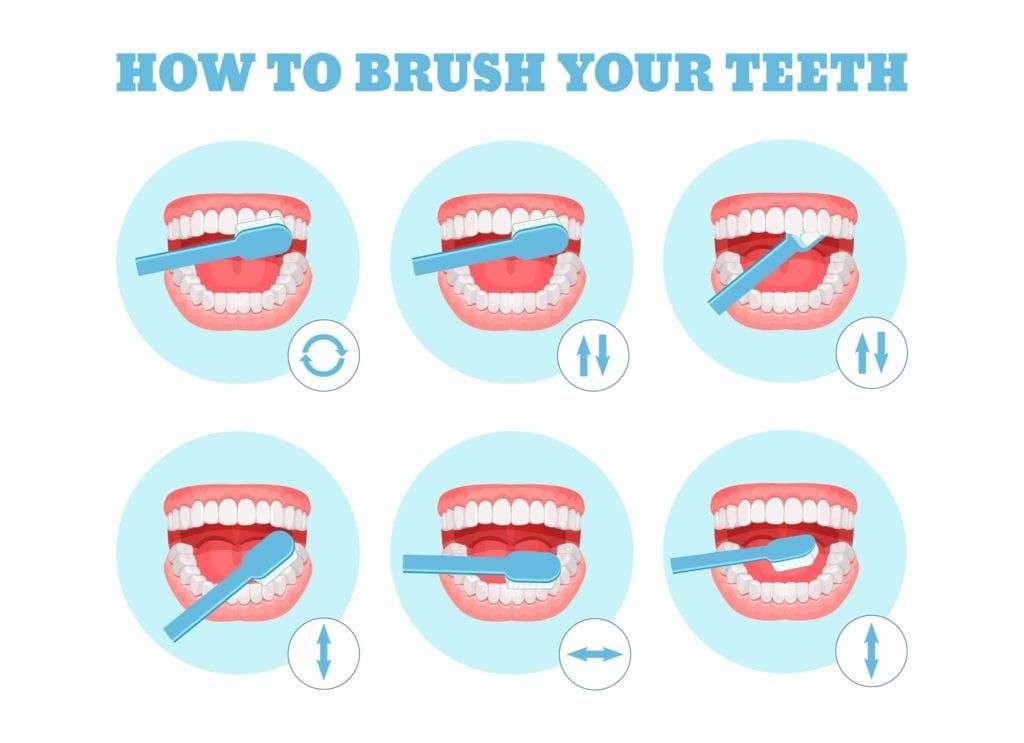The Most Common Toothbrushing Mistakes
Brushing your teeth is one of the most important dental habits. When done correctly, it can keep your teeth healthy and free from cavities. Even when done incorrectly, it is still somewhat beneficial to your oral health. However, there are certain mistakes that you may be making while brushing your teeth that you are not even aware of. Depending on the type and severity of the mistake, your brushing habits may not be as beneficial as they should. Listed below are some of the most commonly made tooth brushing mistakes. Have you made any?
Rushing
With today’s busy lifestyle, rushing is an easy mistake that we often make while brushing our teeth, especially on the days where we are running late for something. Still, is it essential to spend two minutes, or 30 seconds a quadrant, brushing your teeth in order to remove plaque and minimize the amount of bacteria in your mouth.
When you brush for less than two minutes, it is very likely that you are missing parts of your mouth. This allows the plaque and bacteria to settle and can eventually lead to the development of tartar, which is hardened plaque. The most common areas people tend to miss when rushing to brush their teeth are the side of their teeth that are closest to the tongue and along the gum line. In cases where plaque is left along the gum line, gum disease can occur in addition to tooth decay.
Not Paying Attention to Your Toothbrush
Your toothbrush is the main tooth used to brush your teeth. As such, it is important to make sure that you have the right one. For starters, you will need to find a toothbrush that can extend towards the back of your mouth and that has soft bristles. Using a toothbrush with hard bristles can be detrimental to oral health as it can lead to dental erosion and gum recession.
Once you have found an ideal toothbrush, you will also need to pay attention to how long you use it and whether or not it appears to be worn. When your toothbrush wears out, its bristles will appear bent, frayed, or faded. In most cases, you can expect to replace your toothbrush every 3-4 months. You will also need to replace your toothbrush after you have been sick in order to prevent spreading more bacteria.

Not Paying Attention to Your Technique
Along with your toothbrush, your technique is also integral to your tooth brushing routine. While brushing your teeth, you will want to gently move your toothbrush up and down in a circular motion starting at your gums. You will also need to take special care not to apply too much pressure. Ideally, you should be massaging your teeth rather than scrubbing them. This helps to remove plaque from your teeth without causing enamel erosion or gum irritation. Regularly brushing too hard can actually be quite detrimental to your teeth and can increase your risk of tooth decay and gum disease.
Rinsing
Another common mistake people often make while brushing their teeth is to rinse their mouth out with water afterwards. However, you should not do this because of the fluoride that is in toothpaste. Fluoride strengthens your teeth and helps them be more resistant to tooth decay, therefore you will want to leave the fluoride on your teeth as long as possible. Rinsing your mouth with water after you brush also rinses off the fluoride.






